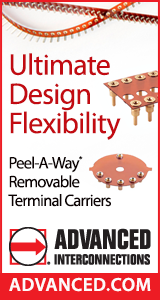|

|
Large Form Factor Surface Mount Technology Process Demonstration
Production Floor |
|
Authored By:Alex Huettis Intel Corporation OR, USA Abid Ameen, Patrick Nardi, Jiaqi Wu Intel Corporation AZ, USA SummaryElectronic packaging form factors are increasing due to high performance computing and artificial intelligence needs. The resulting package coplanarity and dynamic warpage of these large form factor Ball Grid Array (BGA) packages at Tin Silver Copper (SAC) alloy reflow temperatures are trending to increase and push the limits of existing Surface Mount Technology (SMT) capabilities. Increase in package warpage and poor SMT yield is driving a need for new technologies to enable successful component soldering to the motherboard. This paper reviews the implementation of a multiple solder ball diameter (MDSB) strategy to increase the SMT warpage capability for a standard SAC BGA Package. SMT time zero solder joint quality (SJQ) and SMT yield results are presented along with key learnings and next steps. ConclusionsThe increased SMT warpage capability for the MDSB strategy was proven through the SMT yield results. Indicating that the MDSB strategy can provide a SMT solution for high warpage BGA packages. The proposed SMT budget also highlights the balance between package warpage and PCB warpage and how controlling both is crucial to establishing a successful SMT process. This new technology pushes the envelope in previously established SMT package room temperature and high temperature coplanarity and warpage standards and highlights a need for the revision of these standards to enable future large form factor packaging being designed to fulfill future computing needs. We see this as an area where new definitions and standards will be required within the industry to allow for these increasing warpage trends and new technologies being developed to enable them. We also see an increase in PCB warpage within the BGA PCB pad field playing a crucial role in SMT success where historically PCB warpage was not a primary focus. We see this as another area where the industry will need to develop new ways to reduce the range of PCB warpage and warpage variation to enable future package SMT. Initially Published in the SMTA Proceedings |
|
Comments
|
|
|
|

|


